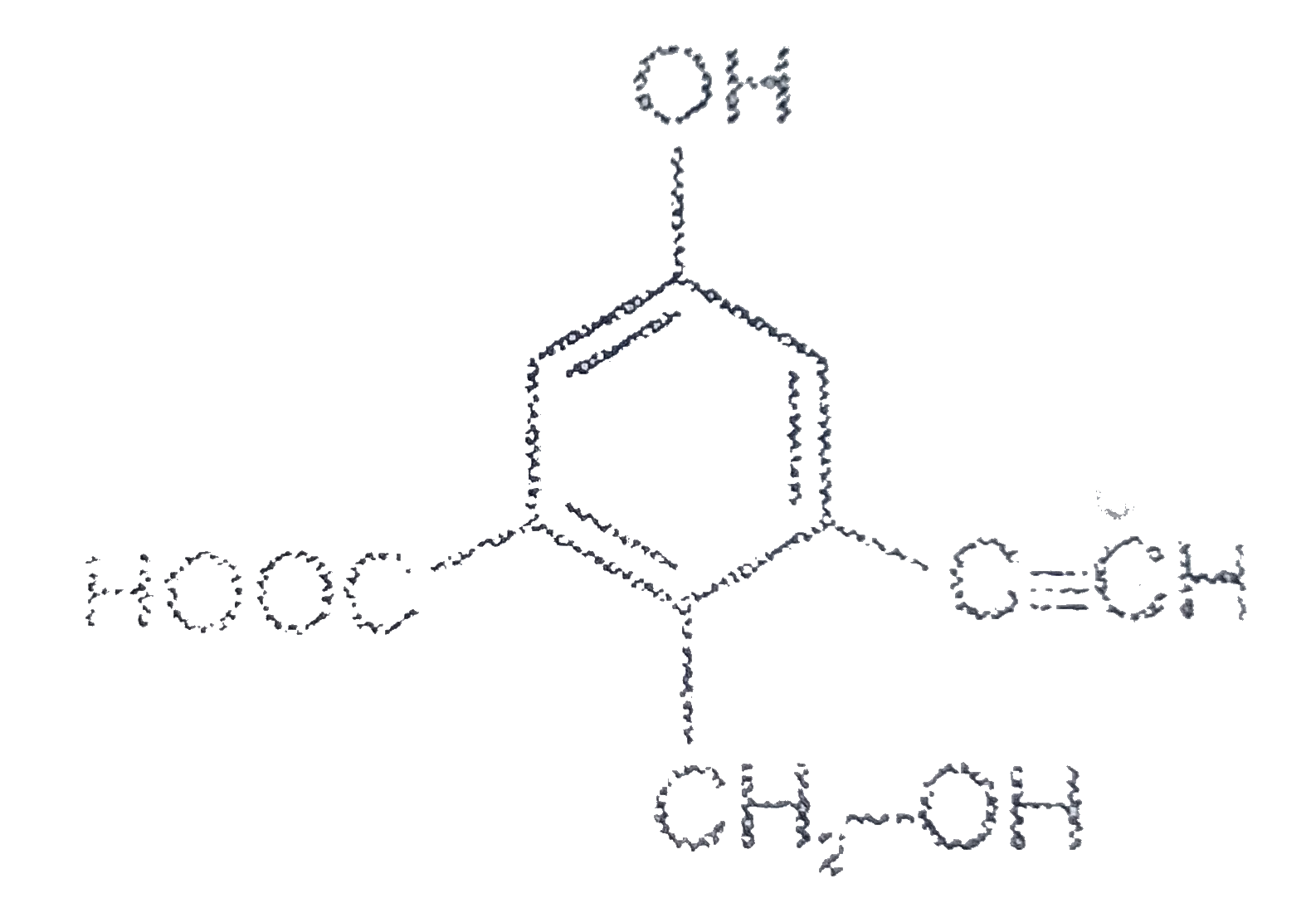One mole of complex compound Cr(NH3)5CI3 gives 3 moles of ions on dissolution in water One mole of the same complex reacts with two moles of AgNO3 to yield two moles of AgCl The complex is :
a.[Cr(NH3)4Cl]Cl2.NH3
b.[Cr(NH3)4Cl2]Cl.NH3
c.[Cr(NH3)5Cl]Cl2
d.[Cr(NH3)Cl3.2NH3
The correct Answer is:C
To solve the problem step by step, we need to analyze the information provided about the complex compound Cr(NH3)5Cl3.
Step 1: Understand the Dissociation of the Complex
The complex Cr(NH3)5Cl3 is a coordination compound. When it dissolves in water, it dissociates into ions. According to the question, one mole of this complex gives 3 moles of ions upon dissolution.
Step 2: Determine the Composition of the Complex
The formula Cr(NH3)5Cl3 indicates that there is one chromium ion (Cr), five ammonia ligands (NH3), and three chloride ions (Cl). The ammonia ligands do not dissociate into ions, but the chloride ions do.
Step 3: Analyze the Ion Formation
When Cr(NH3)5Cl3 dissolves:
- It forms one complex ion: Cr(NH3)53+
- It releases three chloride ions: 3Cl−
Thus, the total number of ions formed is:
1 complex ion + 3 chloride ions = 4 moles of ions.
However, the problem states that it gives 3 moles of ions. This indicates that not all chloride ions are counted as separate ions in the context of the complex.
Step 4: Reaction with AgNO3
The problem states that one mole of the complex reacts with two moles of AgNO3 to yield two moles of AgCl. This implies that two chloride ions are involved in the reaction with silver nitrate (AgNO3) to form silver chloride (AgCl).
Step 5: Conclusion on the Composition
Since the complex gives 3 moles of ions and reacts with 2 moles of AgNO3 to yield 2 moles of AgCl, we can conclude that:
- There are 2 chloride ions that are available for reaction with AgNO3.
- The remaining ion must be the complex ion itself.
Thus, the complex must be Cr(NH3)5Cl2 (with 2 chloride ions) and not Cr(NH3)5Cl3.
Final Answer
The complex is Cr(NH3)5Cl2.
---
The complex Cr(NH3)5Cl3 is a coordination compound. When it dissolves in water, it dissociates into ions. According to the question, one mole of this complex gives 3 moles of ions upon dissolution.
The formula Cr(NH3)5Cl3 indicates that there is one chromium ion (Cr), five ammonia ligands (NH3), and three chloride ions (Cl). The ammonia ligands do not dissociate into ions, but the chloride ions do.
When Cr(NH3)5Cl3 dissolves:
- It forms one complex ion: Cr(NH3)53+
- It releases three chloride ions: 3Cl−
1 complex ion + 3 chloride ions = 4 moles of ions.
The problem states that one mole of the complex reacts with two moles of AgNO3 to yield two moles of AgCl. This implies that two chloride ions are involved in the reaction with silver nitrate (AgNO3) to form silver chloride (AgCl).
Since the complex gives 3 moles of ions and reacts with 2 moles of AgNO3 to yield 2 moles of AgCl, we can conclude that:
- There are 2 chloride ions that are available for reaction with AgNO3.
- The remaining ion must be the complex ion itself.
The complex is Cr(NH3)5Cl2.
Topper's Solved these Questions
- COORDINATION COMPOUNDSBOOK - CENGAGE CHEMISTRY ENGLISHCHAPTER - COORDINATION COMPOUNDSEXERCISE - Exercises Single Correct (Hybridisation , Magnetic And Optical Properties )
18 Videos
- COORDINATION COMPOUNDSBOOK - CENGAGE CHEMISTRY ENGLISHCHAPTER - COORDINATION COMPOUNDSEXERCISE - Exercises Single Correct (Crystal Field Theory (Cft))
15 Videos
- COORDINATION COMPOUNDSBOOK - CENGAGE CHEMISTRY ENGLISHCHAPTER - COORDINATION COMPOUNDSEXERCISE - Exercises Single Correct (Naming And Terminology)
30 Videos
- CHEMICAL KINETICSBOOK - CENGAGE CHEMISTRY ENGLISHCHAPTER - CHEMICAL KINETICSEXERCISE - Archives Subjective
23 Videos
- D AND F BLOCK ELEMENTSBOOK - CENGAGE CHEMISTRY ENGLISHCHAPTER - D AND F BLOCK ELEMENTSEXERCISE - Archives Subjective
29 Videos
Similar Questions
Complex compound [Cr(NCS)(NH3)5][ZnCl4] will be,
View SolutionThe amount of heat liberated when one mole of NH4OH reacts with one mole of HCl is
View SolutionNo. of moles of H2 gas evolved when one mole of the following compound reacts with sodium.

View SolutionWrite the balanced chemical equation and name the products when one mole of ethane reacts with two moles of Cl2.
View SolutionWrite the balanced chemical equation and name the products when one mole of methane reacts with two moles of Cl2.
View SolutionHow many moles of ammonia are produced when one mole of calcium nitride reacts with water?
View SolutionOne mole of alkene an ozonolysis gives two moles of butanone. The alkene is :
View SolutionOne mole aluminium carbide reacts with water to given ________ moles of methane.
View SolutionAssertion The complex [Co(NH3)3CI3] gives no precipitate with AgNO3 solution
Reason The given complex is non-ionisable .
View SolutionHow many moles of NaOH are required to react with one mole of solid N2O5?
View Solution
